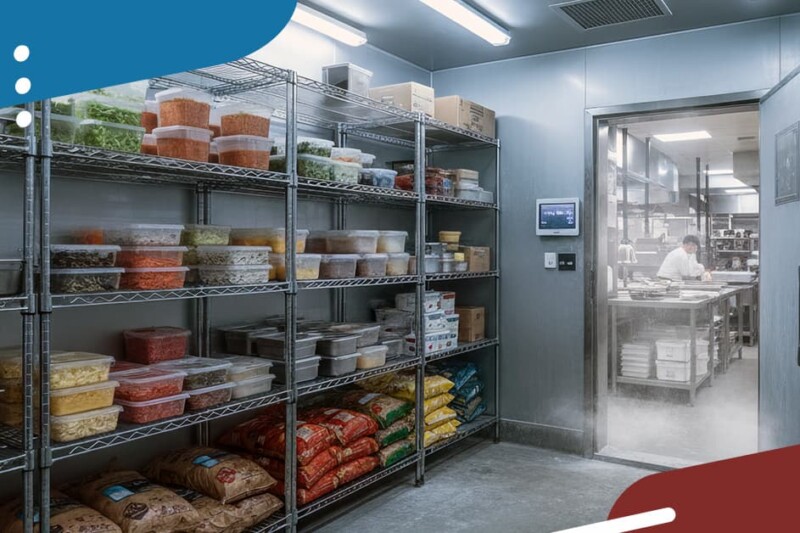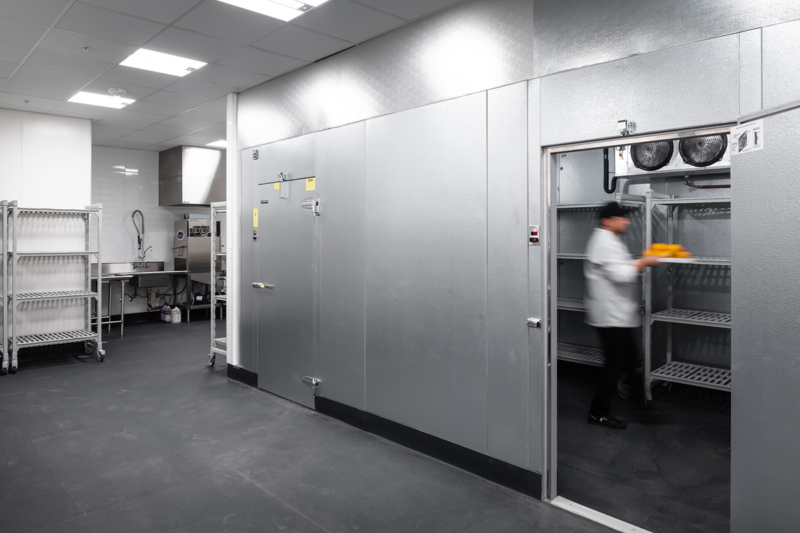5 Factors for Choosing Undercounter Dishmachines
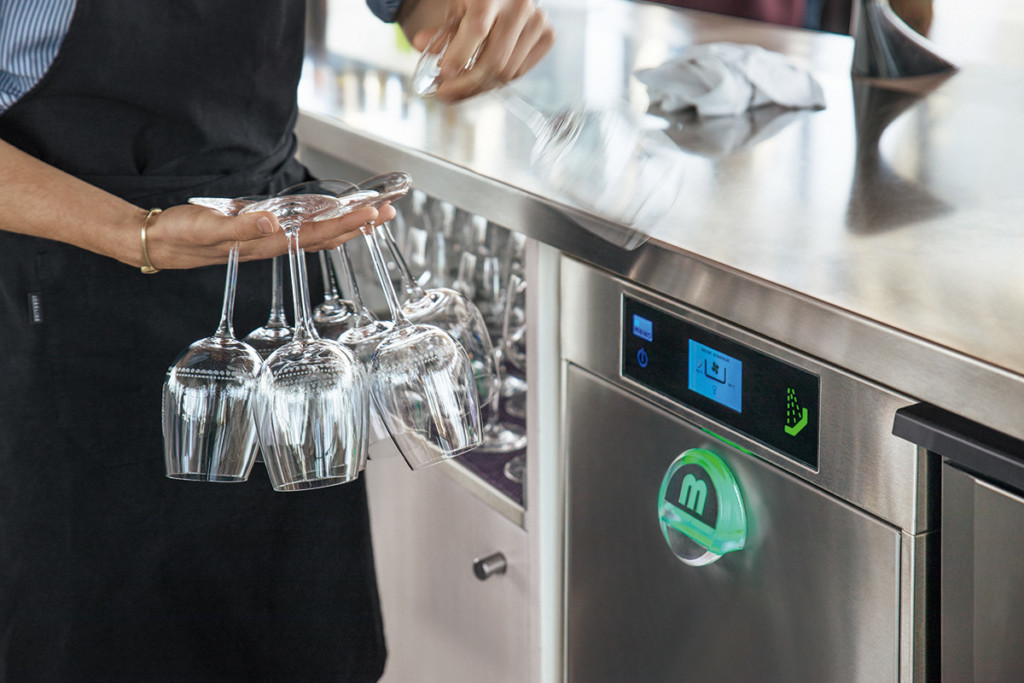
It used to be that undercounter dishmachines produced a lot of steam, making them less than ideal in applications with customer-facing services, such as behind bars or at coffee kiosks as well as in tight spaces like food trucks or ships.
But newer models come with steam recovery capabilities that trap steam before it affects surroundings and use it to heat water for subsequent cycles. “When users open the door on a high-temp unit with the recovery system, it pumps the steam out of the cavity across a radiator on the back of the unit, preheats cold water to go into the booster tank and puts the air back into the cavity,” says one manufacturer. “That steam is used in place of hot water to preheat the cold water for the next round. It also means customers will not see a cloud of steam when the dishmachine door is opened.”
Along with steam recovery capabilities, other factors to consider when selecting an undercounter dishmachine include whether the unit uses high- or low-temp water, its capacity, energy and water usage and wash-cycle options.
1. High- Vs. Low-Temp Models
Undercounter dishmachines use either high- or low-temp water. High-temp models sanitize at 180°F, and they use a booster heater to attain those temperatures, so they require electricity hookups of 208V-240V. Low-temp units need only 115V.
High-temp models also are slightly more expensive to purchase than low-temp units. However, as low-temp models run at 140°F, which is too low to kill bacteria, these units also require the use of chemical sanitizers. These chemicals not only add to the cost over the life of the unit, they also tend to leave a slight residue on wares, can affect the taste of beverages and even diminish the foam head on beer.
There’s no booster heater inside low-temp machines, so they may require a higher incoming water temperature in certain operations, as health code dictates dishes must be washed between 120°F-140°F. “By the time the water gets to their machine from their water heater, it could be down to 112°F, for example, depending on plumbing and what other equipment is using hot water,” says one manufacturer. “They can’t turn up their water heater anymore because it also supplies water to hand sinks and that would be dangerous.” As such, operators may end up specifying a point-of-use booster heater after all.
Likewise, another manufacturer also advises low-temp unit users to validate the number of gallons per hour available for hot water. “If the low-temp machine is washing 30 racks an hour, as an example, and uses 1 gal. of water per rack, an operator needs to make sure that their water heater can supply 30 gal. of hot water in an hour,” he says.
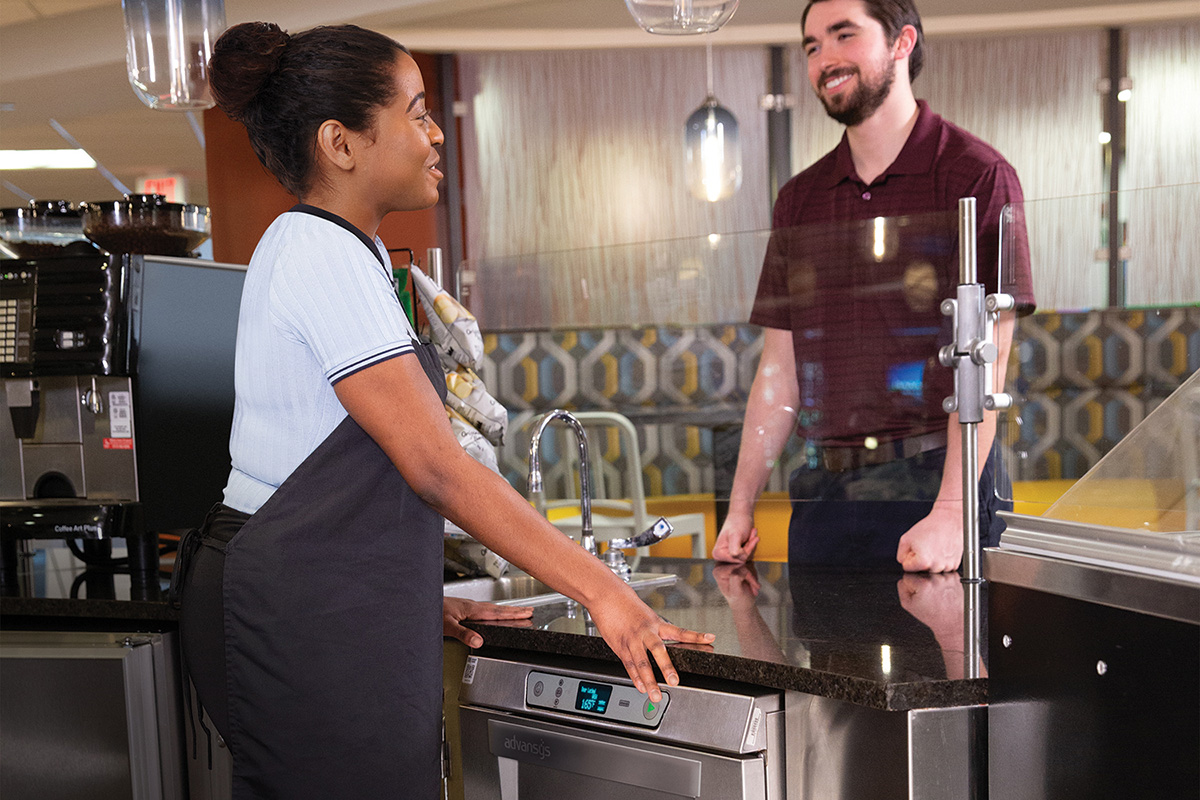
2. Capacity
The most common mistake operators make when selecting an undercounter dishmachine is choosing one too small for their operation. Typically, these machines can wash anywhere from 20 to 30 racks per hour. “To calculate an operation’s capacity needs, we go by a simple rule that one dish rack will accommodate four people’s servings,” says one manufacturer. Take the amount of servings of dishware used in a peak hour and divide by four.
If your operation requires more capacity, you can consider sizing up to a rack conveyor or door-type machine or else specify multiple undercounter dishmachines. You can install them side by side but most manufacturers recommend that each undercounter unit has its own independent water input.
Traditionally, undercounter dishmachines fit in tight spaces and as such, can only fit glassware, dishes and utensils. Yet manufacturers have designed models that can wash larger prep ware too. Larger items—such as 18 x 26 sheet pans and mixing bowls up to 30 qt.—can fit in these units if the door opening is greater than the standard 14 to 16 inches.
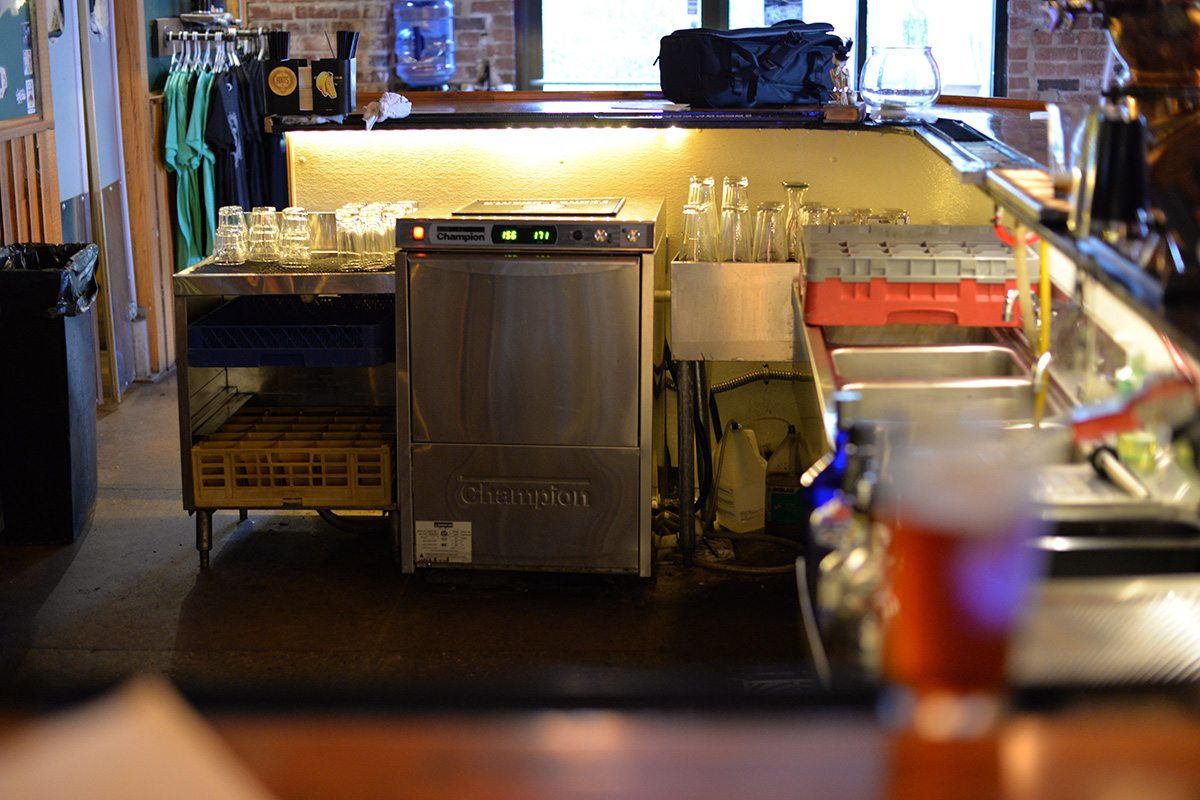
3. Energy and Water Use
Base models are considered fill-and-dump models; new water is pumped in and drained for every wash and rinse cycle. To use less water, more premium models use a recirculating design in which water from one cycle is pumped back in and used for the next cycle’s wash water.
“The longer a machine can reuse that wash water, the less water is consumed, so most fill-and-dump models out there are not Energy Star-rated,” one manufacturer says. Last updated in 2013, Energy Star-rated models use less than 0.50 kW of electricity when idling, less than 0.86 gal. per rack (GPR) of water in high-temp units and less than 1.19 GPR in low-temp models. The next version of the Energy Star commercial dishwasher product specification is currently in development, slated to be put in effect in fall 2020.
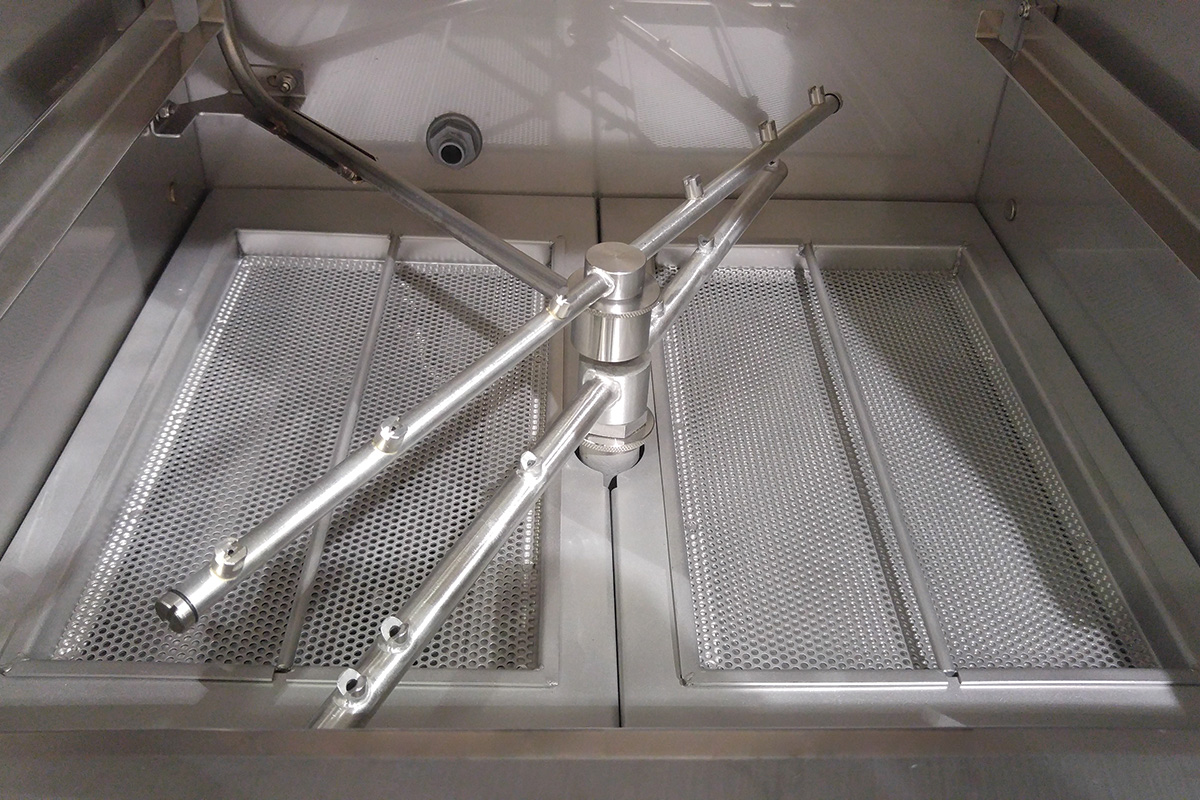
4. Location of Use
Operators should consider how a dishmachine may affect the environment in which it’s installed. As mentioned, heat recovery models will trap unpleasant steam, and some units are double-wall insulated, which cuts down on operating noise.
Take a look at the exterior dimensions of the dishmachine as well. These units fit in small places like bars and coffee shops. One manufacturer makes especially compact units that are suitable for use in nontraditional foodservice settings, such as shipboard galleys and food trucks, where space is tight. One model is almost 5 inches shorter than standard undercounter models, which usually measure 34-inches high, and another is 5½-inches narrower than the usual 24-inches wide.
Coming soon: The next version of the Energy Star dishwasher product specification goes into effect this fall.
5. Cycle Options
More premium models come with adjustable cycle times for varying wash needs. One manufacturer makes a unit with a 17-inch door entry to fit prep ware and has a pots-and-pan cycle that is listed by NSF to clean 100% of fruit baked in a pan at 200°F for one hour.
Scale will eventually build up on the inside of the machine, and the deliming process can be challenging. To ease this process, at least one undercounter dishmachine comes with an automatic deliming cycle, in which the machine doses the right amount of delimer, circulates the deliming solution for a given time, drains the deliming solution, rinses the machine with fresh water and puts the machine back in service. This manufacturer also has a service program that involves testing the local water quality when the unit is installed so that the unit can be programmed to run the appropriate frequency of deliming cycles.
With some research, you’re sure to find a unit that efficiently produces a steady supply of clean wares for your operation.
Undercounter Dishmachines Gallery
Our gallery focuses on makers’ latest high-temp models. Many units include steam recovery and are Energy Star-rated.
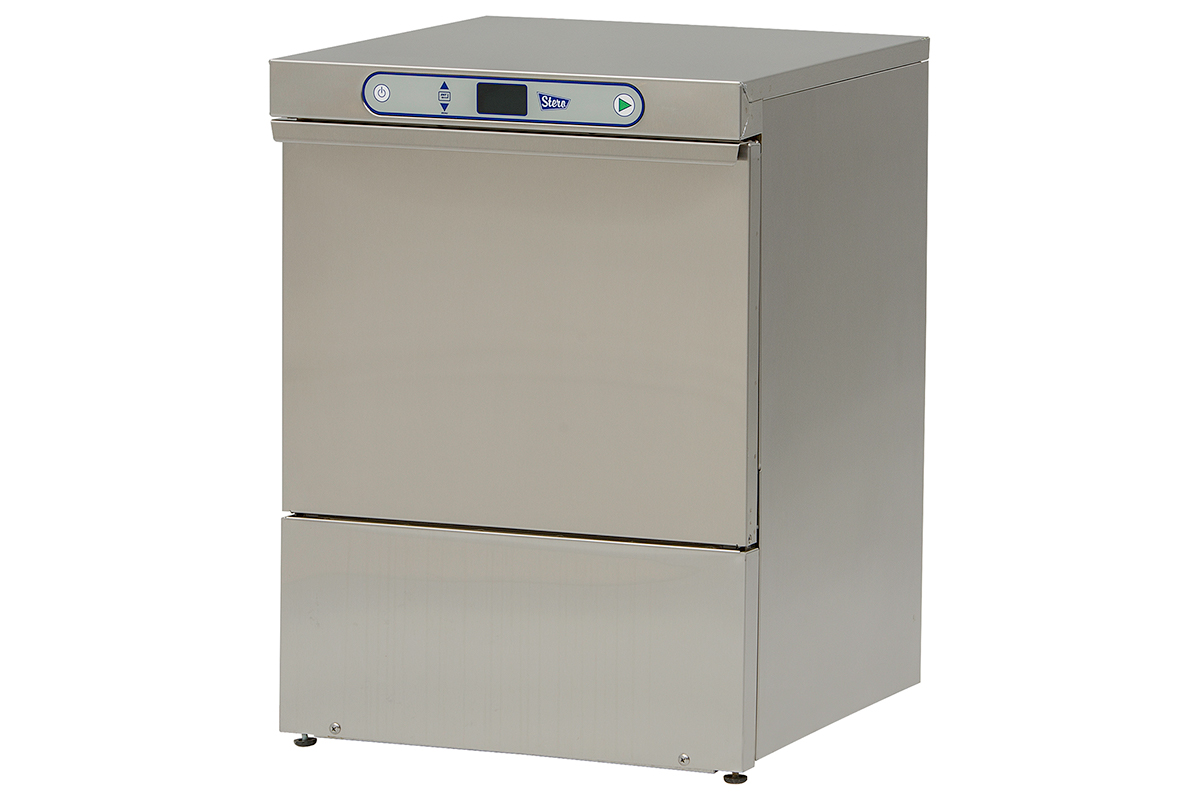
Stero
MODEL: SUH
CYCLE TIME: 116 sec.
CAPACITY: 31 racks/hr.
WATER CONSUMPTION: 0.78 gal./ rack
DIMENSIONS: 23 5⁄16-in.W x 25 9⁄16-in.D x 32¾-in.H
DOOR OPENING: 17 in.
ENERGY STAR-RATED: Y
WEBSITE: stero.com
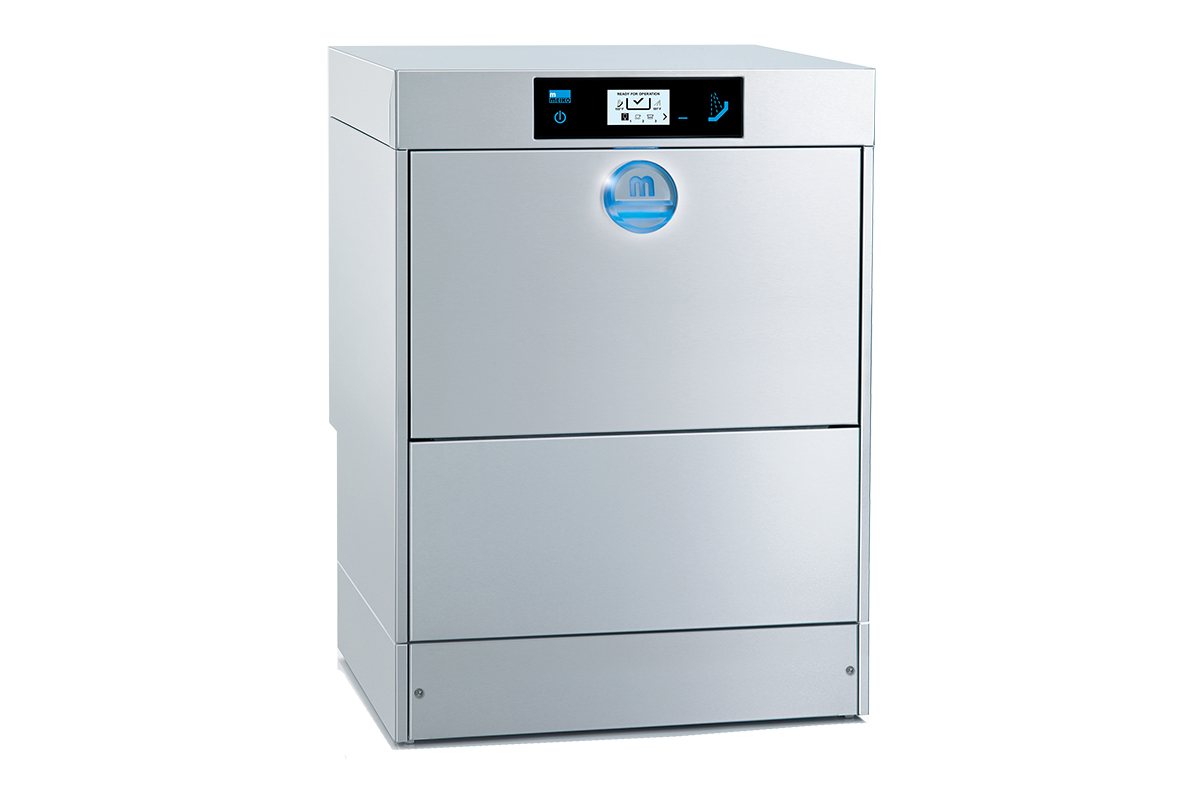
MEIKO
MODEL: M-iClean UM
CYCLE OPTIONS: 95/150/210 sec.
CAPACITY: 23 racks/hr.
WATER CONSUMPTION: 0.61 gal./ rack
DIMENSIONS: 23⅝ -in.W x 23⅝ -in.D x 33½ -in.H
DOOR OPENING: 12⅜ in.
ENERGY STAR-RATED: Y
WEBSITE: meiko.us
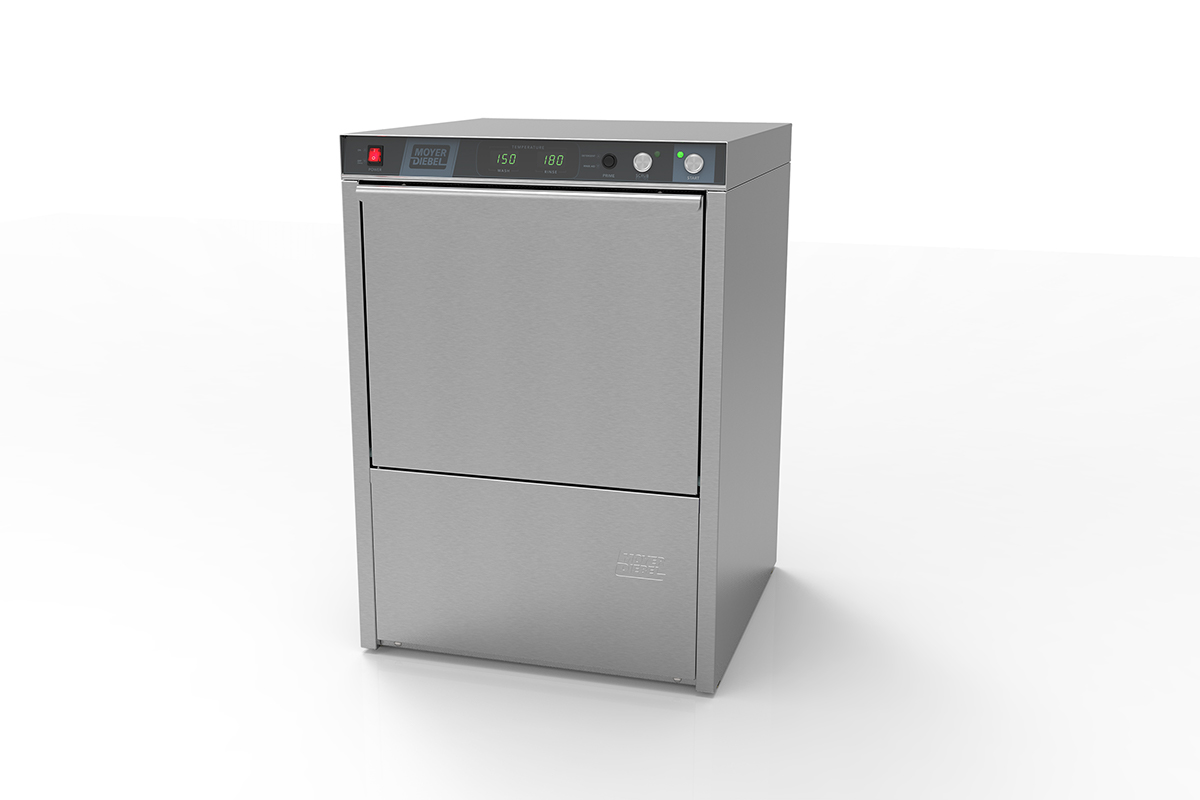
Moyer Diebel
MODEL: 201HT
CYCLE TIME: 141 sec. with Scrub, Delime extensions
CAPACITY: 25 racks/hr.
WATER CONSUMPTION: 1.8 gal./ rack
DIMENSIONS: 24-in.W x 25-in.D x 33¾ -in.H
DOOR OPENING: 15¾ in.
ENERGY STAR-RATED: N
WEBSITE: moyerdiebel.com
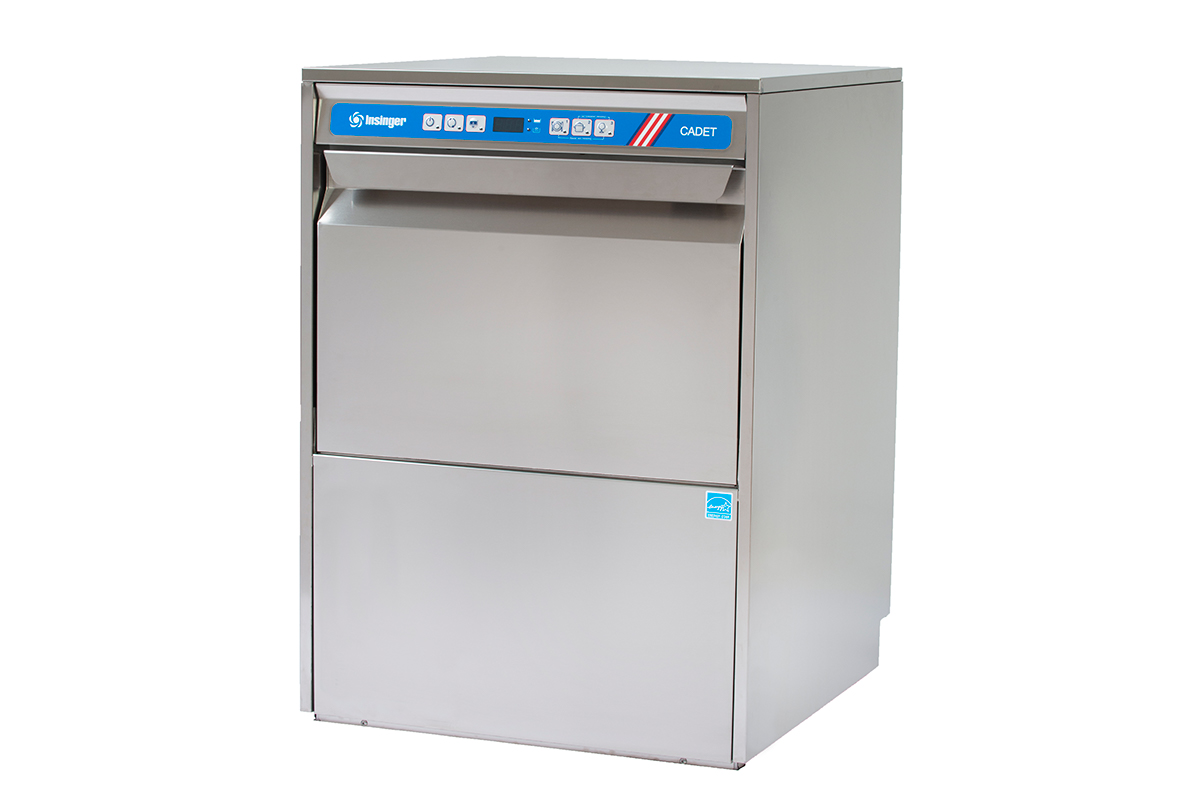
Insinger
MODEL: CADET
CYCLE OPTIONS: 120/130/240 sec.
CAPACITY: 30 racks/hr.
WATER CONSUMPTION: 0.8 gal./ rack
DIMENSIONS: 23⅗ -in.W x 24-in.D x 33½ -in.H
DOOR OPENING: 13 3⁄16 in.
ENERGY STAR-RATED: Y
WEBSITE: insingermachine.com
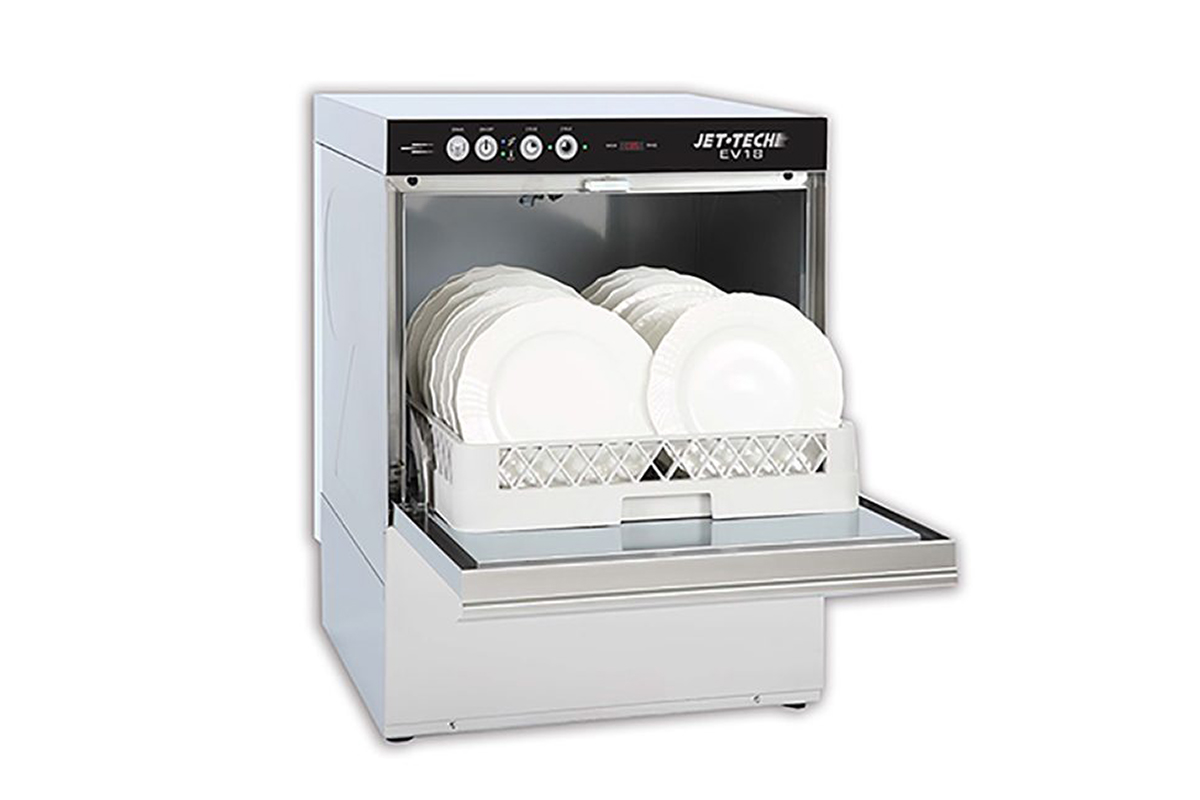
Jet-Tech
MODEL: EV18
CYCLE OPTIONS: 60/180 sec.
CAPACITY: 56/18 racks/hr.
WATER CONSUMPTION: 0.79 gal./ cycle
DIMENSIONS: 22⅝ -in.W x 23¾-in.D x 33½-in.H
DOOR OPENING: 13⅖ in.
ENERGY STAR-RATED: Y
WEBSITE: mvpgroupcorp.com
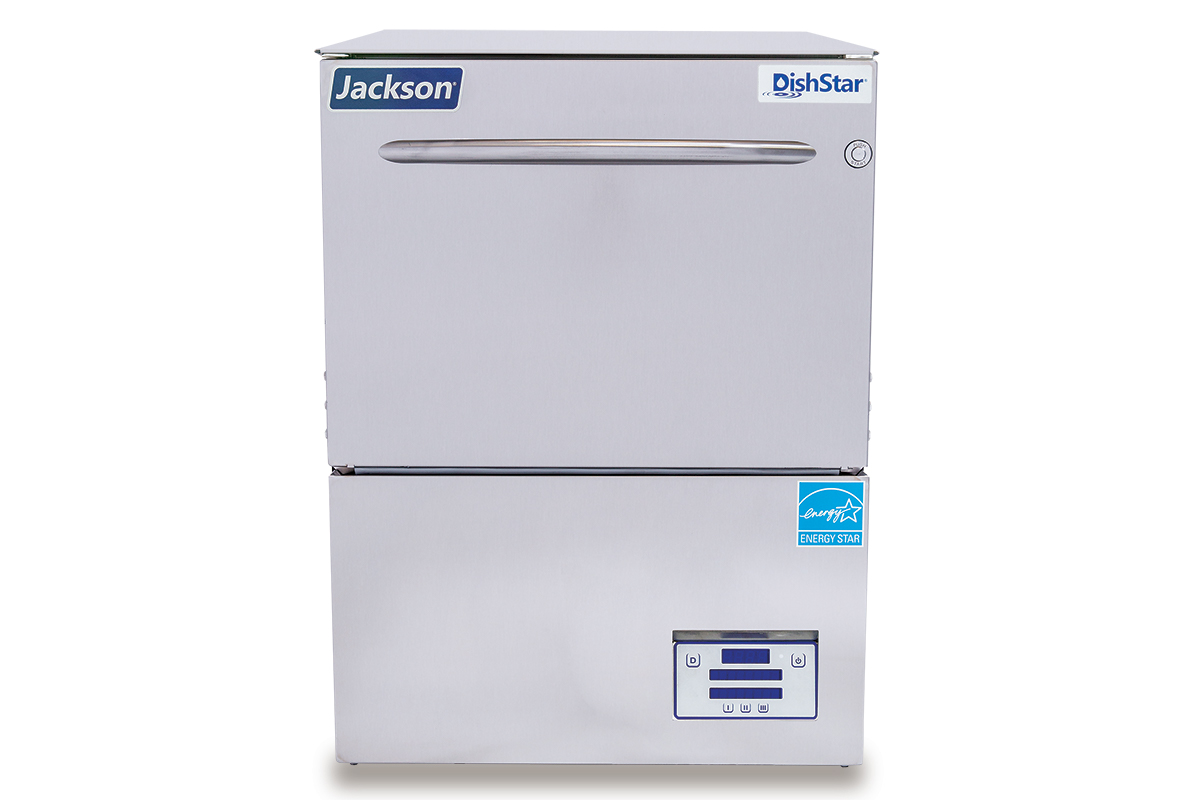
Jackson WWS
MODEL: DishStar HT-E-SEER
CYCLE OPTIONS: 145/213/313 sec.
CAPACITY: 20/14/10 racks/hr.
WATER CONSUMPTION: 0.65 gal./rack
DIMENSIONS: 24¼ -in.W x 26⅞ -in.D x 33¼ -in.H
DOOR OPENING: 14¼ in.
SPECIAL FEATURE: Steam elimination and energy recovery system
ENERGY STAR-RATED: Y
WEBSITE: jacksonwws.com
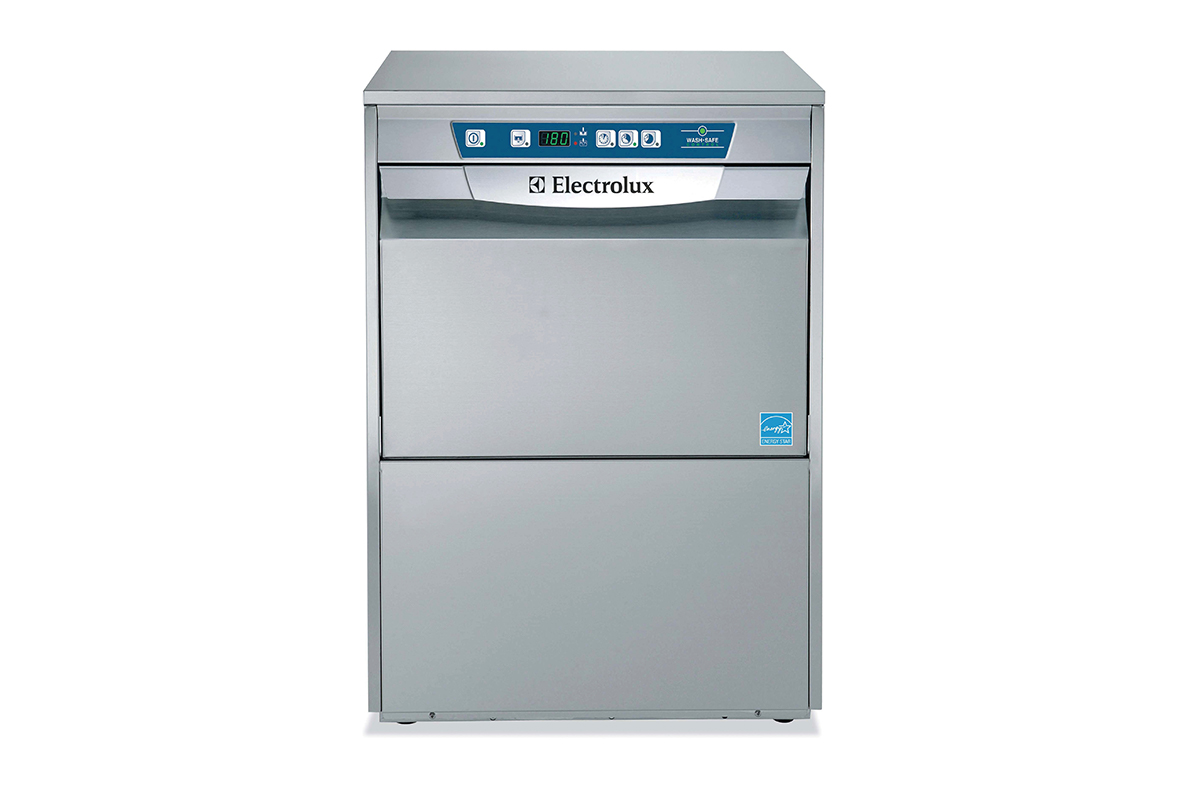
Electrolux Professional
MODEL: 502315
CYCLE OPTIONS: 120/180/240 sec.
CAPACITY: 30 racks/hr.
WATER CONSUMPTION: 0.8 gal./cycle
DIMENSIONS: 23⅝ -in.W x 24 1⁄16-in.D x 33 7⁄16-in.H
DOOR OPENING: 13 3⁄16 in.
ENERGY STAR-RATED: Y
WEBSITE: electroluxusa.com/professional
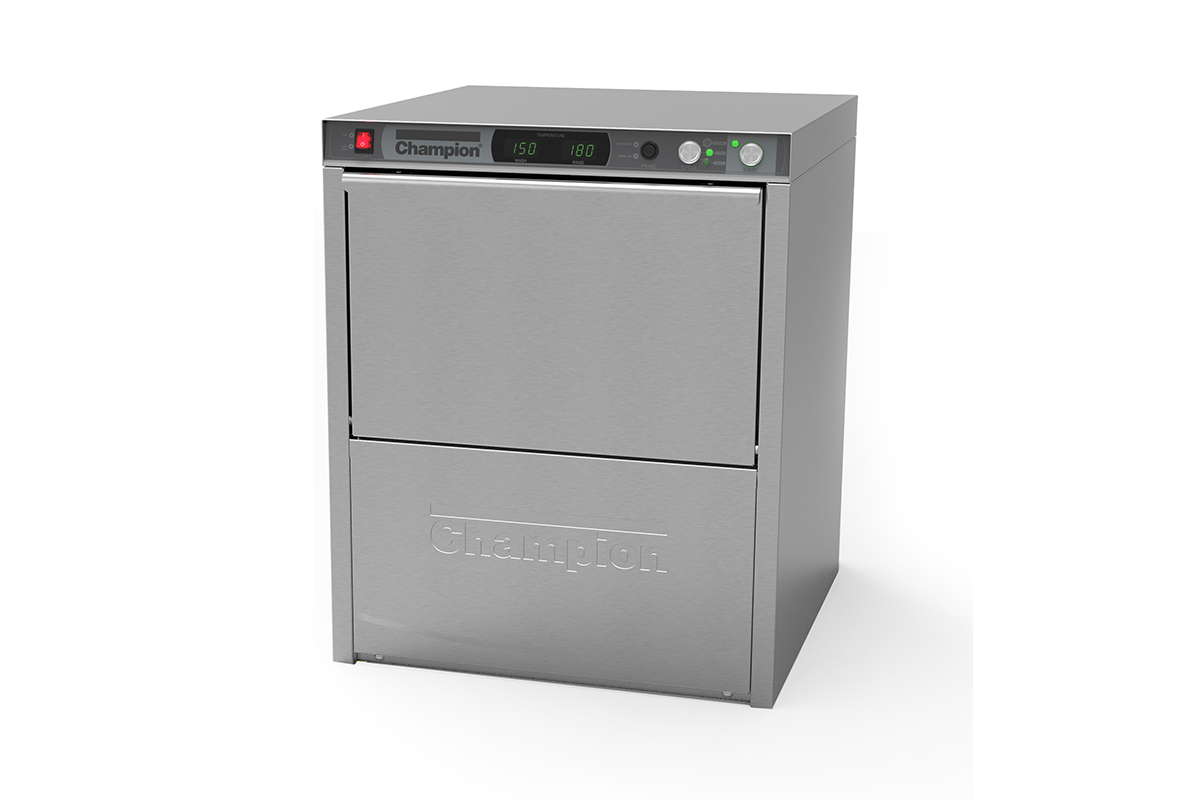
Champion
MODEL: UH330 ADA
CYCLE OPTIONS: 120/200/277 sec.
CAPACITY: 30/18/13 racks/hr.
WATER CONSUMPTION: 0.65/0.54 gal./rack
DIMENSIONS: 24-in.W x 26¾-in.D x 29⅞-in.H
DOOR OPENING: 12 in.
ENERGY STAR-RATED: Y
SPECIAL FEATURE: Steam elimination and heat recovery
WEBSITE: championindustries.com
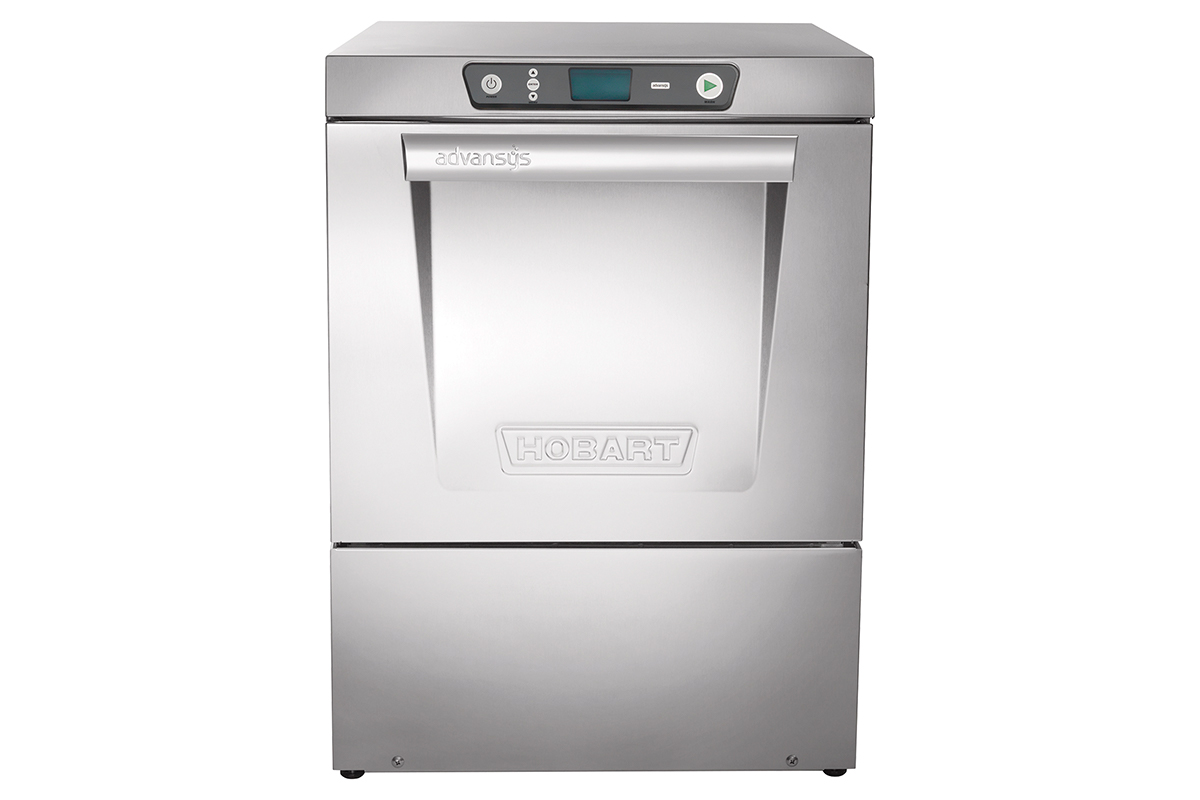
Hobart
MODEL: LXeR
CYCLE OPTIONS: 120/146/275 sec.
CAPACITY: 30/24/13 racks/hr.
WATER CONSUMPTION: 0.62 gal./rack
DIMENSIONS: 23 15⁄16-in.W x 26¾-in.D x 32½-in.H
DOOR OPENING: 17 in.
SPECIAL FEATURE: Steam elimination and energy recovery
ENERGY STAR-RATED: Y
WEBSITE: hobartcorp.com
RELATED CONTENT
- Advertisement -
- Advertisement -
- Advertisement -
TRENDING NOW
- Advertisement -
- Advertisement -
- Advertisement -

